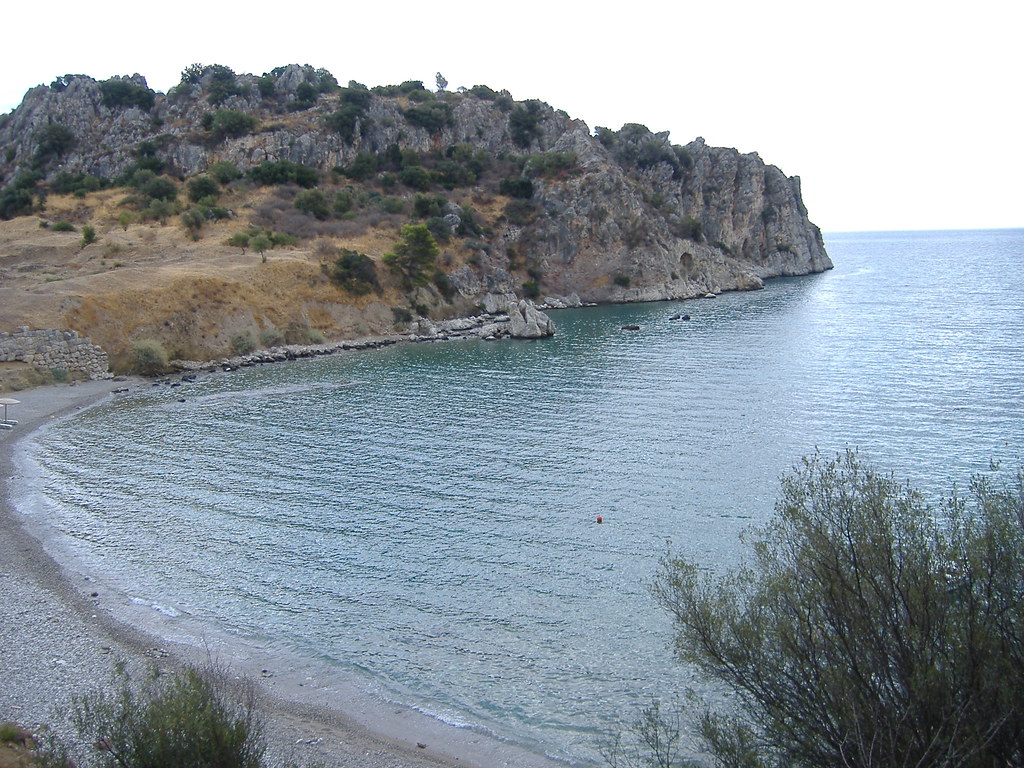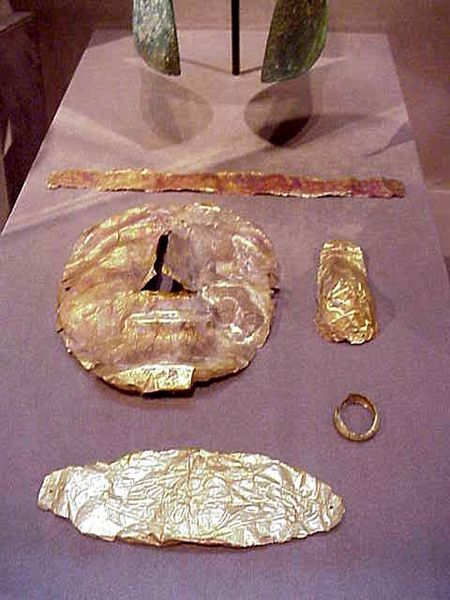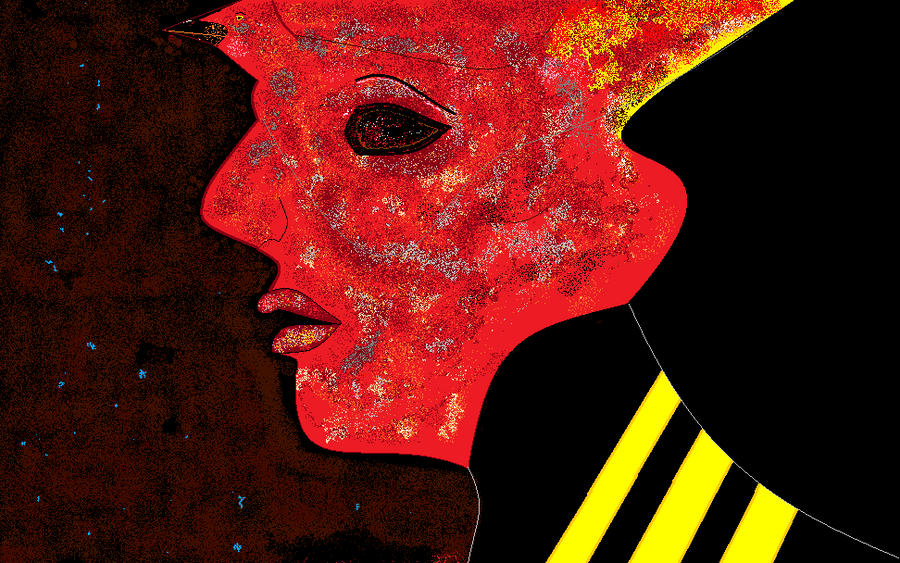.

"All morning long we looked around the citadel/starting from the shaded side...": ruins of the city wall of Asine, a Mycenaean era acropolis briefly mentioned by Homer as part of the kingdom of Diomedes, king of Argos: photo by Heinz Schmitz, 1998
..............Αsίνην te... -- ILIAD
All morning long we looked around the citadel
starting from the shaded side, there where the sea,
green and without luster -- breast of a slain peacock --
received us like time without an opening in it.
Veins of rock dropped down from high above,
twisted vines, naked, many-branched, coming alive
at the water’s touch, while the eye following them
struggled to escape the tiresome rocking,
losing strength continually.

"... there where the sea/received us like time without an opening in it...Veins of rock dropped down from high above...": view of Asine (Ἀσίνη), an ancient Greek city of Argolis, the first city mentioned by Homer as part of the kingdom of Diomedes, king of Argos: photo by lazcorp, 8 September 2009
On the sunny side a long empty beach
and the light striking diamonds on the huge walls.
No living thing, the wild doves gone
and the king of Asine, whom we’ve been trying to find for two years now,
unknown, forgotten by all, even by Homer,
only one word in the Iliad and that uncertain,
thrown here like the gold burial mask.
You touched it, remember its sound? Hollow in the light
like a dry jar in dug earth:
the same sound that our oars make in the sea.
The king of Asine a void under the mask
everywhere with us everywhere with us, under a name:
“Αsίνην te... Αsίνην te...”
and his children statues
and his desires the fluttering of birds, and the wind
in the gaps between his thoughts, and his ships
anchored in a vanished port:
under the mask a void.
and the light striking diamonds on the huge walls.
No living thing, the wild doves gone
and the king of Asine, whom we’ve been trying to find for two years now,
unknown, forgotten by all, even by Homer,
only one word in the Iliad and that uncertain,
thrown here like the gold burial mask.
You touched it, remember its sound? Hollow in the light
like a dry jar in dug earth:
the same sound that our oars make in the sea.
The king of Asine a void under the mask
everywhere with us everywhere with us, under a name:
“Αsίνην te... Αsίνην te...”
and his children statues
and his desires the fluttering of birds, and the wind
in the gaps between his thoughts, and his ships
anchored in a vanished port:
under the mask a void.

"...under the mask a void": Greek death mask with separate nose piece, band, ring, and plaque: gold grave goods assemblage from a warrior's burial, 6th century BC: photo by Mary Harrsch, 9 December 2004 (Walters Art Museum, Baltimore)
carved in relief on the gold cover of our existence
a dark spot that you see traveling like a fish
in the dawn calm of the sea:
a void everywhere with us.
And the bird that flew away last winter
with a broken wing:
abode of life,
and the young woman who left to play
with the dogteeth of summer
and the soul that sought the lower world squeaking
and the country like a large plane-leaf swept along by the torrent of the sun
with the ancient monuments and the contemporary sorrow.
"...and the contemporary sorrow": members of the Greek National Youth Organization EON saluting in the presence of Ioannis Metaxas: image by Jgmarcey, 12 June 2010, from Neolaia, magazine of the Greek State, 1938
And the poet lingers, looking at the stones, and asks himself
does there really exist
among these ruined lines, edges, points, hollows, and curves
does there really exist
here where one meets the path of rain, wind, and ruin
does there exist the movement of the face, shape of the tenderness
of those who’ve shrunk so strangely in our lives,
those who remained the shadow of waves and thoughts with the sea’s boundlessness
or perhaps no, nothing is left but the weight
the nostalgia for the weight of a living existence
there where we now remain unsubstantial, bending
like the branches of a terrible willow-tree heaped in permanent despair
does there really exist
among these ruined lines, edges, points, hollows, and curves
does there really exist
here where one meets the path of rain, wind, and ruin
does there exist the movement of the face, shape of the tenderness
of those who’ve shrunk so strangely in our lives,
those who remained the shadow of waves and thoughts with the sea’s boundlessness
or perhaps no, nothing is left but the weight
the nostalgia for the weight of a living existence
there where we now remain unsubstantial, bending
like the branches of a terrible willow-tree heaped in permanent despair
while the yellow current slowly carries down rushes up-rooted in the mud
image of a form that the sentence to everlasting bitterness has turned to stone:
the poet a void.
image of a form that the sentence to everlasting bitterness has turned to stone:
the poet a void.

"..the poet a void": the "Mask of Agamemnon", Late Bronze Age gold funeral mask found in 1876 by Heinrich Schliemann over the face of a body located in a burial shaft (grave V) of a royal tomb at Mycenae. Schliemann believed that he had discovered the body of the legendary Greek leader Agamemnon, and from this the mask gets its name. However, modern archaeological research suggests that the mask dates from 1550-1500 B.C.E, earlier than the traditional life of Agamemnon: photo by one-thirteen, 26 October 2009 (Mycenaean Collection, National Archaeological Museum, Athens)
Shieldbearer, the sun climbed warring,
and from the depths of the cave a startled bat
hit the light as an arrow hits a shield:
“Αsίνην te...Αsίνην te...” Would that it were the king of Asine
we’ve been searching for so carefully on this acropolis
sometimes touching with our fingers his touch upon the stones.
............................... Asine, summer ´38 -- Athens. Jan. ´40
and from the depths of the cave a startled bat
hit the light as an arrow hits a shield:
“Αsίνην te...Αsίνην te...” Would that it were the king of Asine
we’ve been searching for so carefully on this acropolis
sometimes touching with our fingers his touch upon the stones.
..............................

"...sometimes touching with our fingers his touch upon the stones": Greek Burial Mask: ~agbuttery, 2011 (via Deviant Art)
...it often seems to me
that it is better to be asleep than to find yourself thus without a companion
and insist so. And what can you do in this state of suspension, what say?
I do not know. And what is the use of poets in a mean-spirited time?
-- Friedrich Hölderlin, Brot und Wein, VII, translated into Greek from the French translation by Jean Pierre Jouve, and used by George Seferis as an epigraph to Logbook I, 1940
"The anxiety expressed in those lines was a perennial one for [Seferis]; it can never have been felt more acutely than at this historical moment. Neither could the irony of quoting these words, from a German poet, in 1940."
-- from Roderick Beaton: George Seferis: Waiting for the Angel: a Biography, 2003
that it is better to be asleep than to find yourself thus without a companion
and insist so. And what can you do in this state of suspension, what say?
I do not know. And what is the use of poets in a mean-spirited time?
-- Friedrich Hölderlin, Brot und Wein, VII, translated into Greek from the French translation by Jean Pierre Jouve, and used by George Seferis as an epigraph to Logbook I, 1940
"The anxiety expressed in those lines was a perennial one for [Seferis]; it can never have been felt more acutely than at this historical moment. Neither could the irony of quoting these words, from a German poet, in 1940."
-- from Roderick Beaton: George Seferis: Waiting for the Angel: a Biography, 2003
George Seferis (1900-1971): The King of Asine, 1938-1940, from Logbook I, 1940, in George Seferis: Collected Poems (Revised edition), translated by Edmund Keeley and Philip Sherrard, 1991




8 comments:
touched me deeply
what a beautiful synthesis
thank you very much
the original, in two parts, from Deck Diaries B', 1938-1940
http://edlhm.livejournal.com/6047.html
and
http://edlhm.livejournal.com/6144.html
Thank you for the links to the original, L'Enfant.
The "branching ivy"-like interpenetration and inter-entanglement of personal ("private"), historical, philosophical and cultural significations in the symbolic structures of this poem become more remarkable the longer one lives with it.
Poetry as good as this does deserve to be seen in its natural state, before the linguistic transmogrification.
I've made your links clickable
here
and
here.
L'Enfant's first comment speaks for me also. I so appreciate every part of what you have included here.
"the nostalgia for the weight of a living existence"
This line, or rather what it suggests exists in people, has been on my mind without my being aware of it, for the past several days, and helps me understand why everything seems so crazy and mean at the moment and there's so much lashing out.
"received us like time without an opening in it"
I love this, but I love all of it.
Loved this, Tom. Thanks again.
"synamo"
Thanks Curtis and Robb.
(I too can feel that synamo humming along beneath the ground.)
This ia just so beautifully done. I am deeply grateful for the linking of photos with the poem itself. What a gift! I read and looked at this in tandem with reading Zagajewski's entries about the poem in his book of essays SLIGHT EXAGGERATION. I just feel so lucky that I live in a world that gave me Seferis, Zagajewski, and Clark.
I so appreciate what you have done here! To be able to look at the photos while reading the poem, an incredible experience. I also read it in conjunction with some writing about the poem by Adam Zagajewski in his book of essays called SLIGHT EXAGGERATION. I recommend that, too. In any case I feel incredibly lucky to live in a world that also has Seferis, Zagajewski, and Clark.
Post a Comment